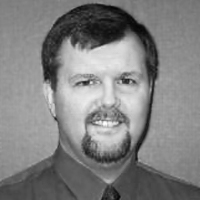Question
I have a client who seems to have unusually severe occlusion problems. His low frequency thresholds at 250Hz, 500Hz and 1000Hz average 35dB in both ears. He has a severe high frequency loss in both ears. I have fitted him binaurally with BTEs and Hard Acrylic Skeleton moulds with 3mm vents which I have belled out still further. No matter what I do he complains of a humming of his own voice, particularly with sounds like ''ee'', ''mm'', but better with the more open vowels. He doesn't appear to be any better off with a monaural fitting. Any suggestions?
Answer
Regarding the problems your client is having with occlusion there are possibly a few more things you might try. The one thing that leaps immediately to mind is changing the length of the molds rather than the diameter of the vents. The echoing sensation of the occlusion effect, as you already know, is caused by the resonant characteristics of the cartilaginous portion of the ear canal. If you change the insertion depth of the mold in the canal it will modify the resonant characteristics that occur when the mold is in place. The most extreme scenarios include a mold with virtually no insertion depth, cut off almost flush with the opening of the canal, or a peritympanic fitting. The peritympanic approach has the most appeal for me as acoustic feedback is likely to be a problem with an extremely short mold and a big high frequency hearing loss. The goal of the peritympanic fitting is to obtain insertion deep enough to make contact with the bony portion of the ear canal. This removes the resonant characteristics of the cartilaginous ear canal entirely from the equation and should solve most occlusion problems.
This brings up another point. Intuitively, a BTE with a large 3mm vent seems to make sense to fit this hearing loss. However, there may be other considerations beyond just matching gain settings to reach the residual hearing. For example, in the case of precipitous high frequency losses one must always question the possibility of a cochlear dead region where the severe HTLs are measured. In such a case, providing a lot of amplification where there is a dead region may be counter productive. That would improve the likelihood of success with a peritympanic CIC since less high frequency gain would be required. The other issue regarding a large vented BTE is the effect of the vent related resonance on this person's complaints. A 3mm vent will have a positive resonance at frequencies just above the point where the vent related gain cut ends. This resonance can be as large as 6 -8 dB in some cases and will occur in the mid-frequencies (1100 - 1500 Hz).If I remember my undergraduate speech acoustics correctly, /I/ and /m/ both have powerful formants at or near that frequency range. It is a bit of a stretch, but it is possible that his own voice coupled with the vent resonance and then added to the output of the aids may be slightly exceeding his UCLs over a very narrow range. Okay, I said it was stretch. But it is a possible vent related issue.
Finally, another approach that may at first seem counter intuitive would be to add gain through the aid in the low frequencies. This approach is used in our fitting software and it comes from the NAL-NL1 prescription rules. In field trials with Conversa we obtained our subject's perception of sound quality with and without the NAL gain correction in the presence of a vent. They overwhelmingly preferred the corrected targets. It was presumed that the additional gain balanced out the perception of the loudness of one's own voice to that of incoming signals by raising the gain for environmental sounds. This does nothing directly to control the occlusion effect. But it does reduce the awareness of it by slightly raising the level of other environment sounds that do not resonate like one's own voice.
Donald Hayes, Ph.D. has been an audiologist for 17 years. He is the Manager for Audiology Research and Training at Unitron Hearing Ltd. In Kitchener, Ontario. He may be reached at don.hayes@unitron.com.

